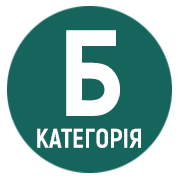ROMAN E. GUTSALA " THE BORROWED MAN": CINEMATIC DIMENSION OF FICTION
DOI:
https://doi.org/10.31494/2412-933X-2019-1-8-18-26Keywords:
poetics, image, plan, symbolism, plasticity, emotionality, infinity, vision, cinematographic thinking of the writer.Abstract
In the article the individual poetics of visualization of E. Gutsal is researched. The researches of literary critics devoted to cinematography of the writer are analyzed. The skill of creating figurative visibility, which expands and activates the boundaries of the reader's imagination, appeals to the acquired experience. The concept of the vision, as a visual image, encoded in a word arising in the imagination of the recipient after reading the work, and its dimensions in the novel, have been clarified. Focused attention is paid to the poetics of the creation of images through techniques of cinematography. The originality of the painting in the novel "The Laid Man" was established, in particular, the cinematic signs of plasticity, emotionality, infinity and symbolism are outlined theoretically. It is proved that the artist creates visual images of characters in two ways: through the visualization of the appearance and manifestations of the inner beliefs of the heroes. In this way, the writer brings the novel closer to the movie theater, giving him the hallmarks of cinematic art. It is revealed that E. Gutsalo uses the potential of color refinements (inclusions) to supplement the images. The main functions of the plan in the novel as an instrument of creation in the imagination of the recipient of an exhaustive visual picture are considered. The role of folklore allusions as an auxiliary means of expanding visual images in the work is described. Conditionally distinguished three groups of characters: the image of the storyteller of Khomi, women and residents of the village Yablunivka – the artistic space of the novel. It was stated that there are no characters in the novel that perform a secondary function. It is proved that the use by the artist of the potential of means of cinema significantly expands the cinematic understanding of the Guzalik novel.
References
Брайко О. Кінематографічна візуалізація простору в малій прозі Євгена Гуцала / Олександр Брайко // Слово і Час. – 2017. – № 1. – С. 36–46.
Генералюк Л. Творчість Тараса Шевченка в контексті взаємодії літератури і мистецтва початку – середини XIX століття : автореф. дис. … доктора філол. наук / Леся Станіславівна Генералюк; Інститут літератури ім. Т. Г. Шевченка. – К., 2011. – 43 с.
Гуцало Є. Позичений чоловік / Євген Гуцало. – Київ : Знання, 2012. – 2012. – 384 с.
Кондрашов В. Структура образу в кіно та літературі: точки перетину / Володими Кондрашов // Наукові записки. Художня література і кінематограф: проблеми інтерактивності. – Вип. 110. Серія: Філологічні науки (літературознавство). – Кровоград, 2012. – С. 61–66.
Пуніна О. Кінофікація українського літературного дискурсу (20 – 30-ті роки XX століття) : монографія / Ольга Пуніна. – Донецьк : ДонНУ, 2012. – 332 с.
Тарковський А. Закарбований час / Андрій Тарковський ; Пер. з рос. та упорядник Н. Соболєва. – Київ : Альтерпрес, 2011. – 268 с.






